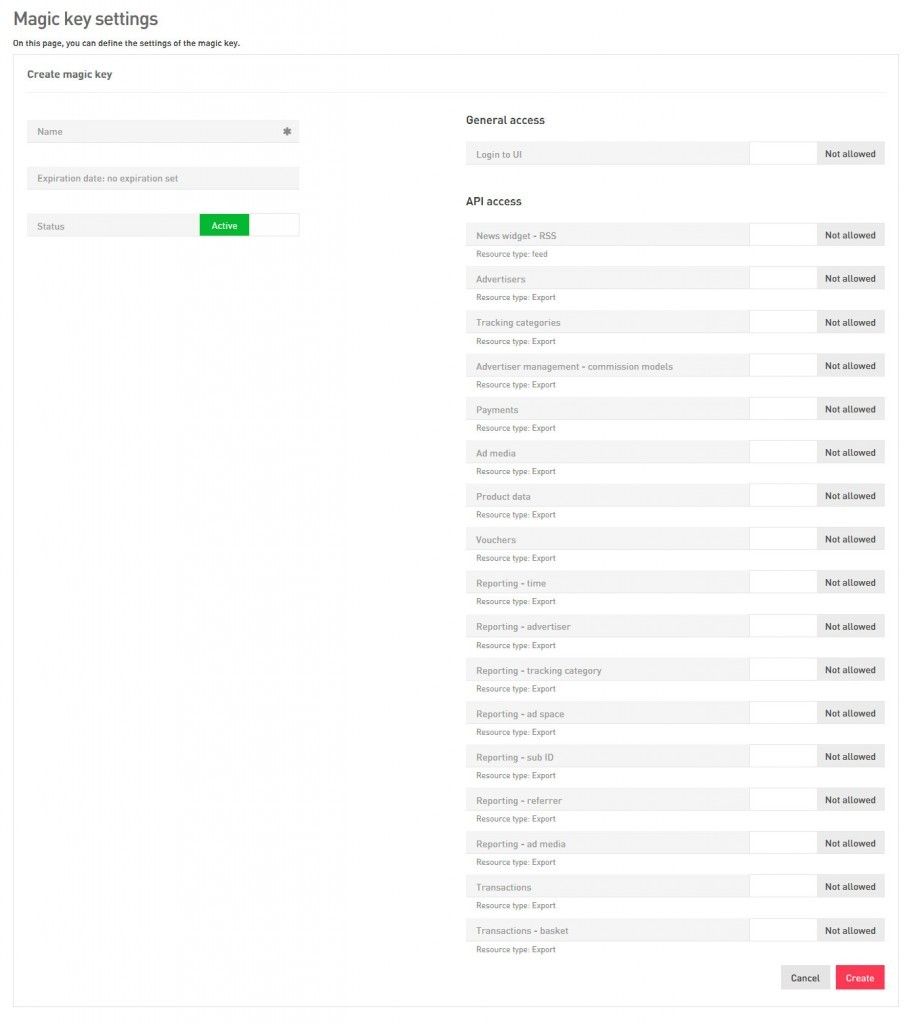What is a API Key?
An API key, also called magic key, is a code which allows you to have access to your admin UI without having to login using your username and password. Having such a code is elementary when you want to create automated exports in order to export data from the platform automatically.
A typical API key looks more or less like this:
256a6f26-b72b-37f8e24ee373
Integrated in an export link, the API key needs to be added directly after the domain:
https://export-demonet.ingenioustech.biz/256a6f26-b72b-37f8e24ee373/adm-statssubid_2209.csv?filter[a:advertiser]=123&filter[timerange_type]=dynamic&filter[timerange]=thisweek1&filter[a:status]=3
Managing API keys
Getting started
Make sure you are logged in to your admin UI, go to the right corner in the top bar and scroll over your username. If you do so, a small menu will appear. Proceed to click on ‘credentials’ in the menu.
If you do so, a page will appear containing two panels. The upper panel allows you to change your password. The lower panel allows you to manage your API keys. It will look more or less like this:
The panel offers you an overview of all the API keys you have created so far. From left to right, you will find the name, the key itself and date on which you last used it, the expiration data and finally the status. Under ‘action’, you can find icons via which you can edit and delete the API key.
Creating a new API key
To create a new API key, start by clicking on the button ‘create new API key’ in the right top corner of the panel. If you do so, you will see a page looking more or less like this:
On this page, make sure you go through the following steps:
Start by going to the left column of the page and give your API key a name. It is recommended to make sure the purpose of the key, such as exporting day to day reports, exporting ad media, etc.
Define an expiration date. When you API key has expired, it will no longer give access to your admin UI anymore. Please note this step is not mandatory and you can decide not to end the validity of your key, but for reasons of security it is recommended.
Make sure the status of your API key is on ‘active’.
In the right column of the page, find a long list of different data you can export via your admin UI. Here, you need to define to what data the API key should give access to. To secure access to specific data, all you need to do is click on the switch next to the text, until you see the switch move from ‘not allowed’ to ‘allowed’. Of course, you can create a generic API key and secure access to all data, but due to reasons of security it is recommended to limit the amount of data your key gives access to.
When you are done, make sure you click on ‘create’ in the right lower corner of the page. If you do so, you will be taken back to the overview page, where you will see the new API key displayed.

